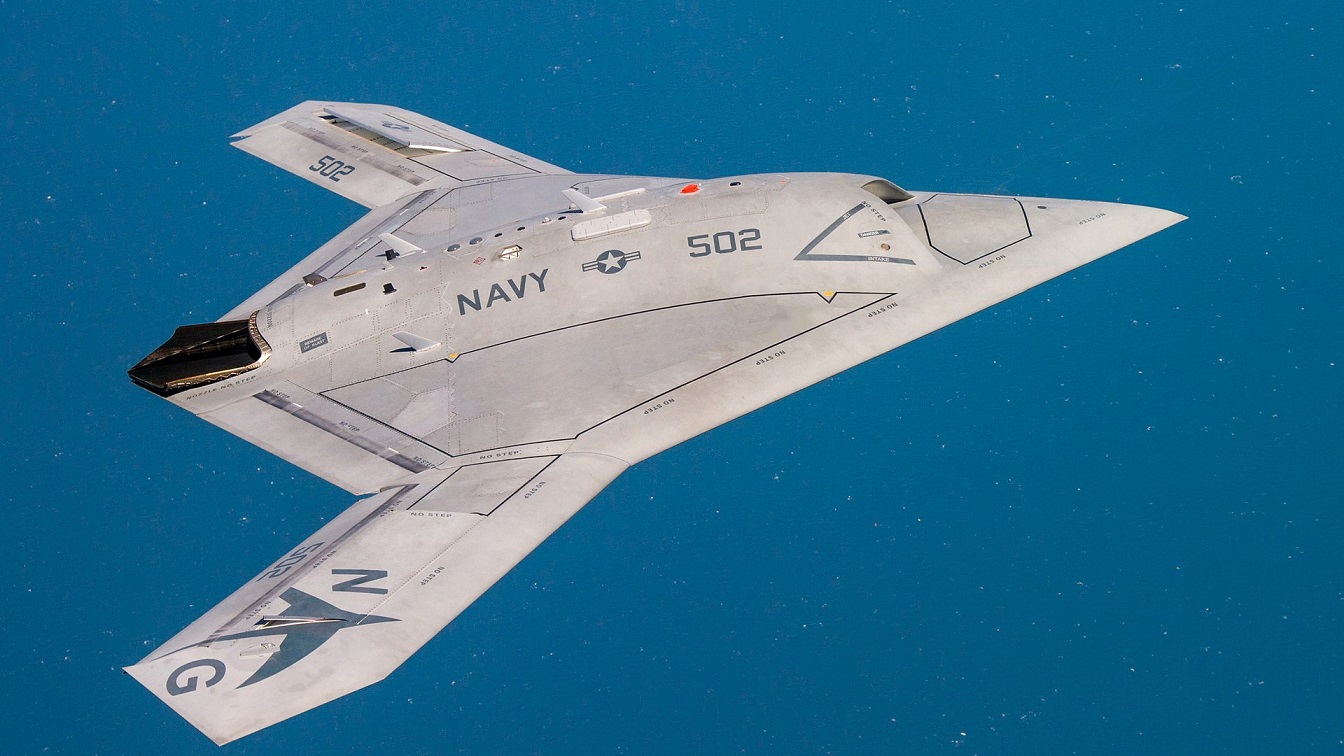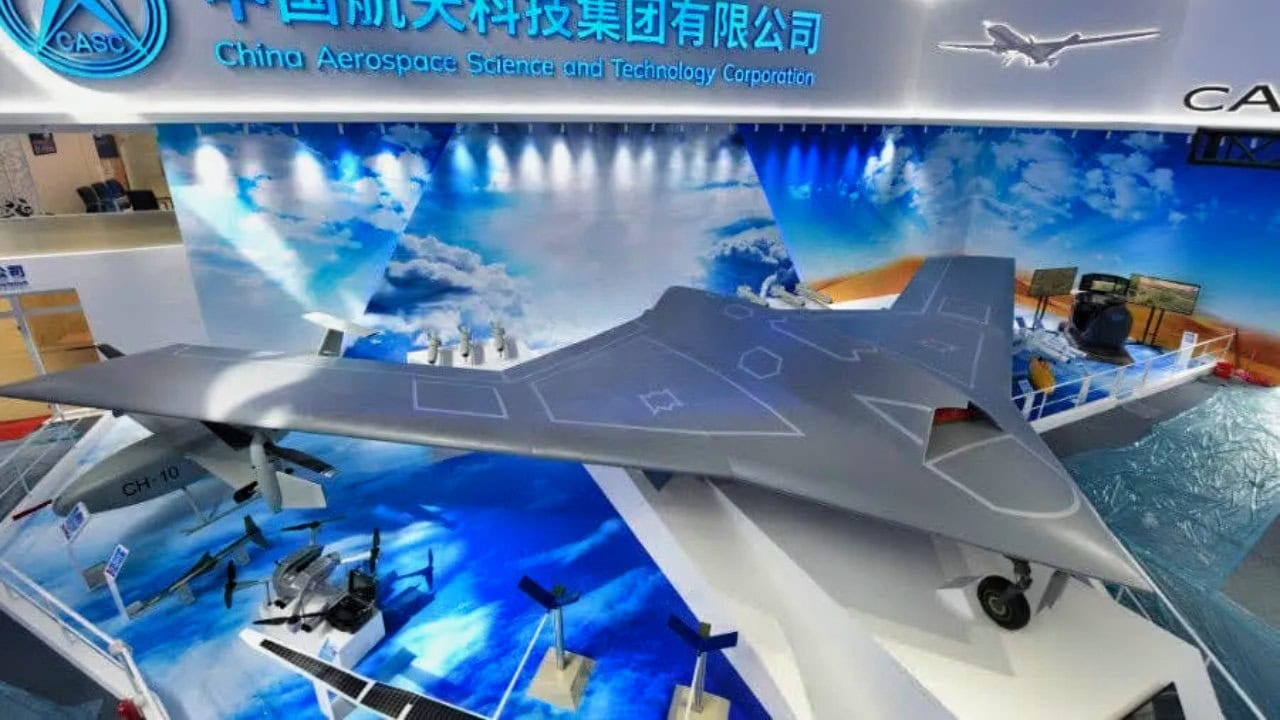Seen as a competitor to the US Navy’s X-47B and the RQ-180, the CH-7 boasts long-range and stealth capabilities—both highly important in the Indo-Pacific. The drone clearly has one mission: to deter the U.S. military or any potential competitor in the region.
China’s CH-7, a low-observable and long-range navy drone, is, at first blush, rather similar to a comparable platform in the US Navy: the X-47B. Both aircraft are single-engine, flying wing designs.
The China Aerospace Science and Technology Corporation, a state-owned firm, developed the UAV. The CH-7 stands for Caihong-7 or Rainbow-7. Although many of the exact details about the CH-7 are unknown thanks to a dearth of publicly available information, a few details can be surmised from the existent information—most notably what the Chinese have said themselves about the CH-7.
Notable and Quotable on This Stealth Drone
Shi Wen, chief designer of the CH series, spoke to the China Daily, a newspaper owned by the Chinese Communist Party, and said that “existing combat drones in the international market are suitable for low-intensity warfare, such as counterterrorism operations, but cannot handle high-tech conflicts that usually involve fighter jets or modern air-defense missiles. By comparison, the characteristics of the CH-7, such as its high speed and stealth capability, make it a good fit for high-tech confrontations.”
This is, in essence, the same dividing line that separates the kinds of UAVs used by the United States in Afghanistan and Iraq—that is, persistent, high-altitude UAVs lacking low-observable capabilities—from those needed to survive in highly contested aerial environments, like the kind we have seen during the war in Ukraine, where electromagnetic warfare developments have severely hindered aerial operations.
Another Chinese publication, The Global Times, quoted a Chinese aerospace executive and expanded on the roles of the CH-7. “The missions that the CH-7 can conduct include monitoring combat zones, electronic support, and jamming, and the radar that it carries can carry out long-range air and sea surveillance and detect large surface vessels, according to the developer.
“In other words,” the publication explained, “the CH-7 is the “eyes” for other combat units who are responsible for attack, such as bombers or fighter jets, going deep inside the enemy’s area taking advantage of its advanced stealth and searching capabilities to locate hostile warships including aircraft carriers. Then, bombers or other units can launch missiles with precision, destroying the enemy’s vessels from a long distance.”
CH-7 and Indo-Pacific
The apparent emphasis on long-range and persistence on-station would hugely benefit the Indo-Pacific. It’s the largest ocean in the world, with vast wastes of open ocean separating the few specks of land and atolls that dot the region.
Though individual fighters, bombers, and long-range observation aircraft would struggle to traverse the entirety of the Indo-Pacific, an already long-range paired with a robust air-to-air refueling ability would be a significant asset—and one that the CH-7 is apparently designed to fill.
With the United States Navy
The United States Navy’s prototype platform, the X-47B, is outwardly similar to the CH-7 and has low observable features—a flying wing design with an engine buried within the fuselage.
A US Navy publication explained that the X-47B “was designed to be a long-range vehicle that could operate at a ceiling of 40,000 feet at a speed classified as high subsonic — that’s more than 600 miles per hour. The purpose of the X-47 is to demonstrate unmanned air vehicle (UAV) carrier suitability. It is only flight cleared for 15,000 feet and 220 knots for testing,” but adds that there are “currently no plans to operationalize X-47B,” and the few airframes built are reportedly heading to museums.

An unmanned X-47B operating over the Atlantic Test Range.
With the United States Air Force
While the X-47B does share some similarities with the Chinese drone, in actual service, the CH-7 may also share some qualities with the RQ-180, a secretive, stealthy unmanned aerial vehicle and surveillance UAV in service with the United States Air Force.
It too broadly shares the flying-wing design and low-observable philosophy, though its exact use is subject to some speculation. Its supposed large size, almost comparable to the United States Air Force’s B-2 or B-21 stealth bombers, furthers the argument that the RQ-180’s range must be greater than 10,000 miles.
And given the RQ-180’s apparent lack of weaponry, it has been postulated that the RQ-180 is a communications node, able to interact and communicate with other stealthy platforms like the F-22 and F-35 fighters as well as the B-2 Spirit and upcoming B-21 Raider strategic bombers. Surveillance and reconnaissance are also likely applications for the RQ-180.
What Happens Now on CH-7?
Though China’s CH-7 does outwardly share some characteristics with several American platforms, its reported weapon load-out points to a slightly different mission set, one that prioritizes offensive strike over persistent surveillance or aerial refueling.
However, paired with air-to-air refueling, the CH-7, by all appearances, offers China a survivable and long-range strike capability paired with low-observable features.
About the Author: Caleb Larson
Caleb Larson is an American multiformat journalist based in Berlin, Germany. His work covers the intersection of conflict and society, focusing on American foreign policy and European security. He has reported from Germany, Russia, and the United States. Most recently, he covered the war in Ukraine, reporting extensively on the war’s shifting battle lines from Donbas and writing on the war’s civilian and humanitarian toll. Previously, he worked as a Defense Reporter for POLITICO Europe. You can follow his latest work on X.

